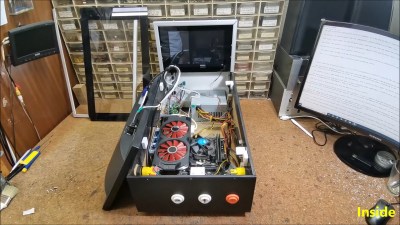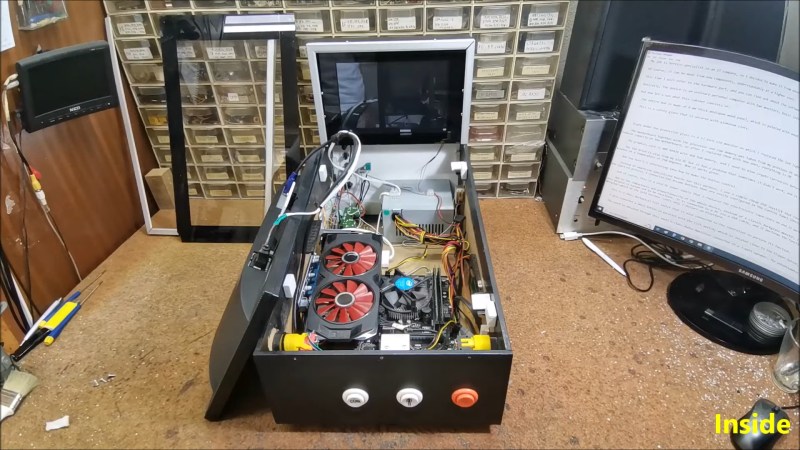Do you love pinball, but can’t justify owning a full-size cabinet? Yeah, us either, and that’s why we’re so interested in [mircemk]’s great-looking DIY mini virtual pinball cabinet. Since [mircemk] is a IT service specialist, they are lucky enough to have access to lots used and broken equipment, and that’s what this build is made of.
 Essentially two computers working together, the playfield is a old 17-inch monitor that needed its LED lighting replaced before gracing the MDF cabinet The backglass is an ancient 10-inch tablet that was perfect for this application.
Essentially two computers working together, the playfield is a old 17-inch monitor that needed its LED lighting replaced before gracing the MDF cabinet The backglass is an ancient 10-inch tablet that was perfect for this application.
Even the motherboard, RAM, and SSD came from one of [mircemk]’s previous PCs. The SSD needed some attention first as well — it didn’t work sometimes, and didn’t show up in the BIOS at all, so [mircemk] threw it in the oven for 10 minutes at 250°, and now all is well.
One thing we really like about this build is that instead of designing a control board for the buttons, [mircemk] used a cheap USB joystick and wired them up to the pads.
So how does the tablet figure into all of this? It’s connected to a PC via USB and does its job thanks to a piece of software called Wired XDisplay. There is even a tilt switch in this bad boy. Because what’s a pinball cabinet without a tilt switch? A cheater’s cabinet, that’s what. Check out the build/demo video after the break.
Don’t even have the space for a mini cabinet? We hear you. Here’s one that fits in the palm of your hand.
















SSD in the oven at 250F for 10 minutes? What magic is this?
SSD motherboard
250°C or 250⁰F? The article doesn’t say. But there’s quite a difference between 394 and 523K!
If you can’t tell that 250°C (482°F) would be more than a bit too much for the intended purpose, then you really shouldn’t be doing such things at all (at least not until you’ve learned enough to understand why this trick worked).
Ah, almost perfectly suited for a german forum. May i suggest to add:
“Its electricity. You will die!”
How does one know?
250°C is quite a nice temperature for kinda-reflowing those old HP printers with faulty connections on their boards (HP LJ P2015 for example).
-> How does one “just know” that is not the right temperature to fix stuck SSD cells?
Flash memory of certain types “wears out” because after tooany weite cycles electrons eventually get “stuck” in the floating gates of the memory transistors leaving them locked in the on position; or off position depending on whether they are P channel or N channel devices. Exposure to enough heat for enough time can allow enough stuck electrons to diffuse across the gate insulation restoring the transistor’s ability to turn of and on. Of course too much heat can cause PN junctions to interdiffuse or allow metal conductive paths like vias to “dissolve” in the surrounding substrate which tends to kill IC funtionality.
I’m tempted to try this on some Old SSDs I have that no longer work but I suspect my mileage will vary
This reflows the solder, eliminating any tin-whiskers that may have formed as a result of manufacturing with lead-free solder (a requirement to meet European RoHS standards).
It’s how they make Bake-in bits. ….😁
If it has a tilt switch I would assume it has G force sensor that interacts with the game. Just don’t get rough.
I was sad it wasn’t a real pinball machine and just a video game.
Yes because virtual .. ya know, the first word of the title of the article … implies real